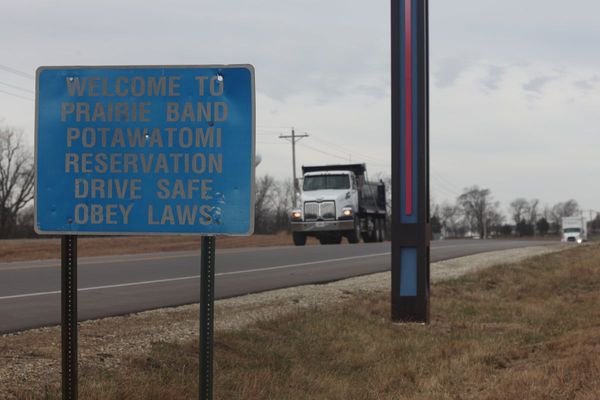Parts of Somalia are at real risk of famine at the start of 2026, a Somali minister has warned – with the number of people classified in “food emergency” having tripled in the country’s South West State this year.
Nasir Arush, minister of humanitarian affairs in South West State, told The Independent that the crisis was driven by cuts to humanitarian aid in the country, which have been felt particularly accutely in his state.
“South West State is one of the most vulnerable states in Somalia, and this year aid agencies have reduced the food assistance available for families,” he says. “The situation has deteriorated month-on-month, and it now looks like we could see a food catastrophe at the start of next year.”
His comments come as data from the Food Security and Nutrition Assessment Unit (FSNAU) – a cross-agency-funded food security assessment service in Somalia – shows that the number of people facing critical levels of hunger in South West State has soared this year.
The number of people assessed to be at the Integrated Food Security Phase Classification (IPC) level of IPC 4, or “food emergency.” has increased from 72,000 in the first quarter of the year, to 227,000. That is in a state with a population of 4.2 million.
The last time parts of Somalia were deemed to be at the “food catastrophe” level of IPC 5 – which is when famine occurs – was in 2011, during a famine in which an estimated 260,000 people died.
The 2011 famine was also centred on parts of South West State, which is an area of the country that is particularly vulnerable to drought, and which has also continued to suffer as a result of conflict with the Al-Shabaab terrorist group.
According to Mr Arush, it is normally when areas are ranked at IPC 4 that humanitarian organisations really step in and increase their support. But this year, things feel different.
“Normally when it’s an emergency, donors will do something called reprogramming, which will see donors redirect some resources to address the emergency,” he said. “But this time around, very little of this is happening.”
In both 2017 and 2022, a catastrophic food crisis was avoided thanks to help being offered, he added. But it is less clear now who is going to step up: “There always used to be available resources from the UK and US governments, but now we do not know where the support will come from,” he added.
“I want to stress too that we are very grateful for the donor community for the support we have received since civil war broke out in 1991, and we understand there is donor fatigue, but we really do need help,” he said.
The United Nations Office for the Coordination of Humanitarian Affairs (OCHA), which coordinates humanitarian responses around the world, shows that in Somalia, currently just 21 per cent of the $1.4 billion humanitarian response requested by NGOs has been funded so far this year.
The total funding is around half the level that was achieved at this time last year, according to Crispen Rukasha, head of office at OCHA Somalia.
“Partners are extremely constrained, especially the local NGOs, as a result of funding cuts,” he said, adding that there is massive pressure on remaining infrastructure. “It might be that there were 10 clinics in an area, and now there is only one, which puts huge pressure on resources”.
Across Somalia, UN data puts the number of people at IPC 3 and IPC 4 at 4.4 million. Most worryingly, some 1.9 million children under five are facing acute malnutrition across the country, and of those, some 400,000 children under five are facing life-threatening severe acute malnutrition – which requires urgent medical intervention.
Some 170 clinics, which treat health problems as well as malnutrition across the country, have shut across the country this year due to aid cuts, according to Mr Rukasha. “We are seeing women travel 20km or 30km (12 to 19 miles) to find a clinic for their children, which is compounding malnutrition".
Humanitarian crises in Somalia are driven by a number of factors, including protracted civil war, weak health and nutrition infrastructure, and the escalating risk of climate shocks, including drought and flooding.
The Independent has previously reported that aid cuts are increasing existing vulnerabilities across the country.
The fact that the crisis in South West State has come in the wake of a relatively good rainy season recorded in the state in May indicates just how significant an impact aid cuts have had on the humanitarian situation.
The second rainy season of the year, which runs from October to November, has just started, however, and Mr Arush warned that the prospects are grim. “We can see that the rain is not happening, which will lead to a lower harvest and weaken livestock, and which makes use particularly worried about what will happen at the start of 2026,” he said.
What’s more, while the impacts of aid cuts on Somalia have become more pronounced as the year has progressed, they are set to worsen in the new year. “The impact of changes to aid funding is set to be felt more severely in the first or second quarter of next year,” Mr Rukasha said.
For now, Somali authorities and NGOs will continue to lobby foreign governments with the hope that more donors will step in to avoid catastrophe.
“We continue to travel to embassies in Nairobi and Mogadishu to tell our partners what is happening and make sure that they are fully informed,” Mr Arush said. “And when they have all the information, all we can do is hope that they step up and help.”
This article was produced as part of The Independent’s Rethinking Global Aid project
Trump says allies in Middle East have offered to send troops to fight Hamas in Gaza
Trump has spent 700 percent more on deadly weapons for ICE this year
Loggins demands removal of Trump's AI-generated video using ‘Danger Zone’
Thune signals Trump special counsel pick is DOA after racist texts revealed
Cuts to world’s biggest malaria fund risk lives of 750,000 children
Why AI-generated ‘poverty porn’ fake images need to be stopped







